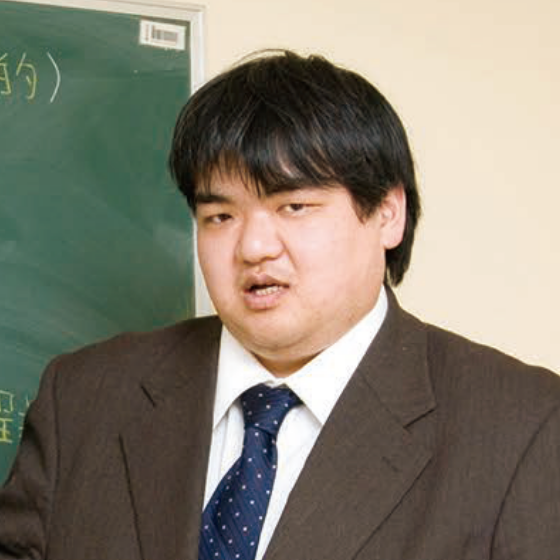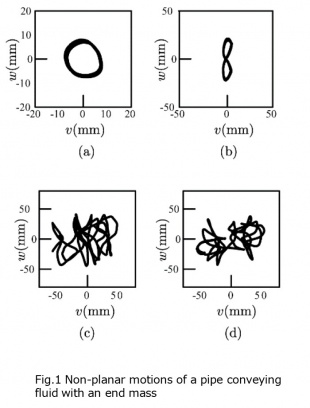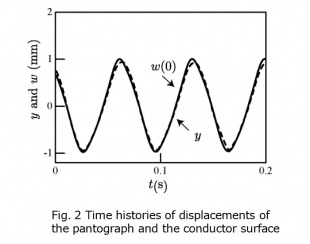- Home
- Faculty Members
- Department of Mechanical Engineering
- Kiyotaka Yamashita
Faculty of Engineering
Department of Mechanical Engineering
- Key words
- Nonlinear vibration, Flow-Induced vibration, Pipe conveying fluid, Theory of dynamical system, Self-excited vibration, Impact oscillation, Chaos

Doctor of Engineering / Professor
Kiyotaka Yamashita
Education
Department of Mechanical Engineering, Faculty of Science and Technology, Keio University, Keio University Graduate School of Science and Technology, Engineering Master’s program, Keio University Graduate School of Integrated Design Engineering, Engineering Doctoral program
Professional Background
Visiting Lecture at Waseda University, Research Associate at Yamagata University, Lecture, Associate Professor, Professor at Fukui University of Technology
Consultations, Lectures, and Collaborative Research Themes
Lectures and technical consultations on flow-induced vibrations and nonlinear oscillations
Main research themes and their characteristics
「Non-planar motions of a flexible pipe conveying fluid」
It is well known that a cantilevered flexible pipe conveying fluid can cause flutter type instability. This problem has been studied form the view points of classical problems in the continuous system. Mathematically, one of the most important characteristics of this problem is that the system is non-self-adjoint and the system is described with non-self-adjoint partial differential equation and its boundary conditions.
Such problems appear to widely exist in mechanical systems, such as airfoils elastically supported in a fluid flow, rotating shaft and a hunting oscillation. In this study, I consider the selfexcited pipe vibration as a typical example of self-excited vibrations which can be caused by the non-orthogonal eigen-functions in the system. Nonlinear analyses are needed to clarify the post flutter phenomena and non-planar pipe motions.
In particular, we conduct experiments involving a silicone rubber tube conveying water to qualitatively confirm the theoretical results. In the experiments, we use an image processing system to capture the non-planar motions. Figure 1 shows the series of non-planar motions in the experiments.
「Restrictions of impact oscillations between a pantograph and an overhead rigid conductor line」
A railway current collection system consists of a wire and a pantograph. The wavy wear on the surface of the conductor line in the acceleration and the deceleration sections or the curve section can be produced by the repeated electric ark. The contact force between the pantograph and the conductor line can fluctuate by the wavy wear. When the contact force is lost, the pantograph separates from the conductor line and this phenomenon is called contact loss.
We modeled the contact loss between the pantograph and conductor line with the wavy wear as the impact oscillations between a spring-supported beam and a sinusoidal vibrating rigid body. It is assumed that the impacts take place at a midpoint of the beam. We theoretically study the impact oscillations based on the theory of discrete dynamical system and the numerical calculations. Figure 2 shows the time histories of the displacement of the vibrating rigid body and the lateral displacements of the beam when the excitation frequency is near the second mode natural frequency. In this case, the contact loss cannot be produced and the pantograph is in contact with the conductor line.
Major academic publications
K. Yamashita, T. Yagyu, H. Yabuno, Nonlinear interactions between unstable oscillatory modes in a cantilevered pipe conveying fluid, Nonlinear Dynamics, (2019), 98, 2927-2938.
Yamashita, K., Furuya, H., Yabuno, H., Yoshizawa, M.: Nonplanar vibration of a vertical fluid-conveying pipe (effect of horizontal excitation at the upper end). Journal of Vibration and Acoustics, (2014), 136, 041005-1-12.
Yamashita, K., Kitajo, K., Wada, S., Sugiura, T. and Yabuno, H., Impact oscillations with multiple modes between a pantograph and an overhead rigid conductor line in a railway current collection system, Journal of vibration and Control, 2012, 18, 499-508.


